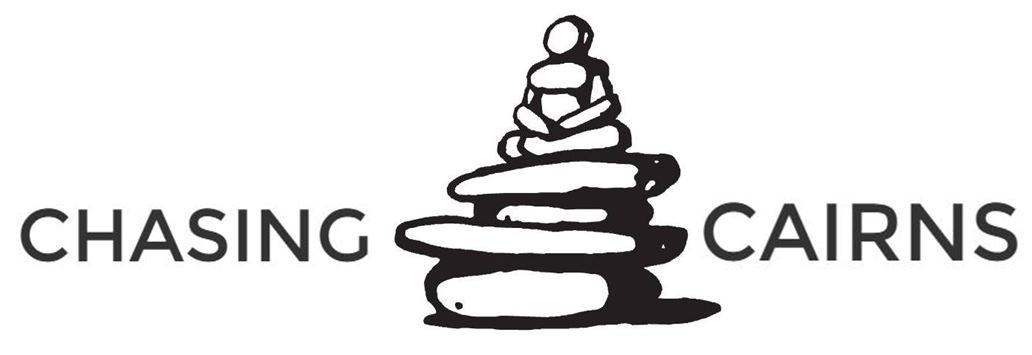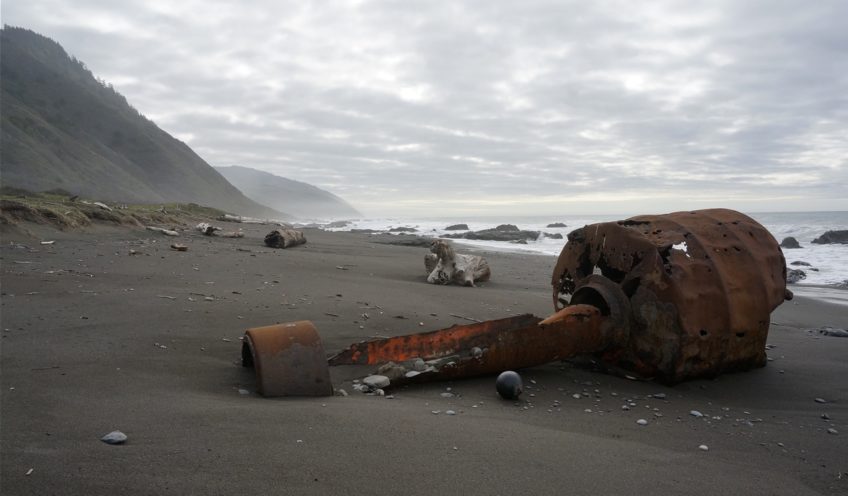Like Crater Lake, California’s Lost Coast has ranked high on my bucket list ever since I read this article on Indefinitely Wild. Many of the places that I am visiting on this trip are completely on the beaten track. Even though some National Parks are harder to get to than others, they are all upheld to similar standards. By and large, National Parks have well-maintained roads, modern visitor’s centers, and helpful, friendly staff. All of these amenities can make it difficult to realize how wild some of these places truly are. The Lost Coast, on the other hand, feels inescapably wild and ravishingly isolated.

After driving through Redwood forests and winding alongside endless rocky shores, I finally rolled into Eureka, CA as the sun was setting. My plans to spend the night, however, were foiled by a seemingly endless parade of drunk and disorderly vagrants that left me feeling far from confident about my sleep spot. In most locations I feel totally OK because I optimistically trust people to act “normal.” I feel safe because it isn’t “normal” to break into cars or to knock on the windows haphazardly. In Eureka, drugs and alcohol seemed far too prevalent to expect “normal” behavior from its inhabitants. After twenty minutes of cruising, I stopped to fill up on gas and headed further south, towards to Mattole Beach.

Just south of Eureka, I hopped off of Route 101, driving through picturesque Ferndale before climbing into the hills. By now, the sun was sinking beneath the Pacific and the first stars were burning in the darkening sky. Darkness had arrived. Serendipitously, I was about to begin a ninety-minute drive over one of the curviest, most pock marked roads of my trip. Crawling along at a mere 25 mph, I snaked around pot holes and banked through tight turns, constantly flicking between my high and low beams to see what was coming. Every now and then, a local would come ripping around a turn, sending me skittering onto the miniscule shoulder. Those moments were stressful, but exceedingly rare. It was very clear that this road did not see much nighttime traffic.
After fording a stream and bouncing along for what felt like hours, I pulled into a sandy parking lot. Cracking my windows, I feel asleep to the sounds of crashing waves, under a canopy of stars winking through my moon roof. I had found Mattole Beach. Tomorrow, I would wander the tidal flats of the Lost Coast. A wash in expectation and giddiness, I soon fell into a deep sleep.

One of the tricks of hiking the Lost Coast is timing the rise and fall of the tides, as some parts of the route are entirely impassable and mortally dangerous at high tide. I rose early. Before preparing for the day’s hike, I stumbled over the soft sands out to the beach, marveling at the crushing power of the waves. The noise rose and fell as percussive breakers faded into the calm rush of water flowing over loose sand. Initially, this cacophony overpowered my senses, but slowly it shifted into a melodic, almost meditative backdrop. Having said hello to the ocean, I returned to the car, shouldered my pack, and began my day.

The Lost Coast is an eighty-mile section of the California coast that falls under the protection of the King Range National Conservation Area and the Sinkyone Wilderness State Park. Although once sparsely occupied, an exodus in the 1930’s left this section of coast largely undeveloped and uninhabited. Hemmed in by coastal mountains and steep valleys, few roads ever breached this rugged stretch of land. For all these reasons, the Lost Coast is widely recognized for its wildness and remoteness. That recognition has not, however, gone unnoticed. The Lost Coast represents a wilderness experience that is growing harder and harder to find. For some, that is reason enough never to go there. For others, that makes it a legendary destination. I’ll let you figure out which category I fall into.

If I had had more time and had been able to rent a bear canister in Eureka, I would have hike the length of this eighty-mile section of wilderness. Instead, I plotted a course to the Punta Gorda Lighthouse. Known as the “Alcatraz of Lighthouses,” this beacon first shone in 1912 and quickly gained a reputation as one of the most remote lighthouses in America. As such, devious light keepers might be “sentenced” there to atone for their misdeeds. Pretty cool if you ask me…

From my first step, this hike was unlike any I had undertaken. Simply put, my route walked the line between high bluffs or vertical cliffs and the crashing waves. There was no trail, at least not yet. It had been erased with the ebbing tides. I was free to make my own way, wandering this way and that. There were no rules, no agreed upon path of least resistance. So wander I did. I clambered up bluffs, peered into caves, raced across the receding waves, hopped onto boulders, jumped over streams, and scampered through beach grasses. Suddenly, I realized why it all felt so familiar. This scene was not unlike a hike that my father and I had done on the southwest tip of England in Cornwall. High ridges abutting serene coastal beaches spotted with picturesque inlets… It definitely struck a cord. The Lost Coast, however, didn’t have the crowds, the obvious human presence, or the established paths of Cornwall. It felt undeniably exposed, wild, and raw.


The coast is contoured enough that you are constantly hiking from inlet to inlet, rarely aware of your relative position on the trail. You can imagine my surprise, then, when I rounded a corner and saw the Punta Gorda Lighthouse silhouetted against the low horizon. To reach it, I climbed onto the old light keeper’s access road that wound along that final section of coast. As I neared the lighthouse, I strayed from the path, walking closer to the edge of the bluff overlooking the beach below. To my surprise, I stumbled on a bizarre scene: a hundred seals napping on the sands ten feet below me! To me, seals have always felt like the black Labradors of the sea, so I couldn’t help but smile as I looked at them all lazily loafing around on the beach. I sat there watching them slap sand in each other’s faces, watching the young nursing from their mothers, watching them flop inefficiently, all the while listening to their harsh barks and painful squeals. They may be cute, but they do not sound cute.




I hiked up to the lighthouse for lunch, seeking shelter from the wind as I unpacked for a quick lunch. Leaving my pack behind, I jogged further up the coast, wanting to see as much as I could before I turned around. In the distance, I saw three dark shapes miles ahead, working their way south. In my mind, I assembled a crew of friends for the hike, making mental notes for the future. This would be the extent of my Lost Coast travel for this time though. Spinning around, I climbed the tower of the lighthouse, peering out through the lattice of iron bars at the ocean roiling below. Ships undoubtedly would have given the Punta Gorda’s beam a wide berth.

Although I prefer loop hikes, there is a beauty in the shifting perspective of hiking the same trail both ways. It feels so different, yet oddly familiar. Certain rocks trigger memories that you didn’t know you had stored. Other features you expected to see are entirely obscured by the reversal of your vantage point. Your brain’s instincts can be deceiving, forcing you to reevaluate your expectations constantly. This hike was no different. I recognized certain inlets or sections of cliff, but chose different paths wherever possible. Where I had taken the high route before, I walked next to the water. Where I had played among the surf, I rose above the rocks. The Lost Coast inspires creative path finding. The route is clear, but your path is your own.

Eventually, I found my way back to Sam. After unloading my pack, I tossed my Crocs in the car and headed back to the water. I stood just below the water line, letting wave after wave wash against my shins. Even though I had only scratched the surface of the Lost Coast, it had been totally worth it and easily ranked among my favorite hikes of the trip. I knew I would be back soon.


When I returned to the road, I welcomed the opportunity to drive in the daylight. The previous night, I couldn’t help the feeling that I was missing spectacular scenery. I had been right. The road back to civilization wove through steep pastures, dove into valleys, and edged along the mighty Pacific, under clear skies filled with floating hawks riding invisible currents. What a trail, what a road. See you next time Lost Coast!



3 Responses
Jean Cronon
There are many spectacular and beautiful views you saw on this part of your trip.
The one that troubled me was the pictures on the shore of the seals lying on the beach. They looked dead. Hopefully I am wrong.
jcronon
They are very much alive! Just napping and lounging around for the day!
Mary Kelly
Awesome and desolate…all in one.
Mary